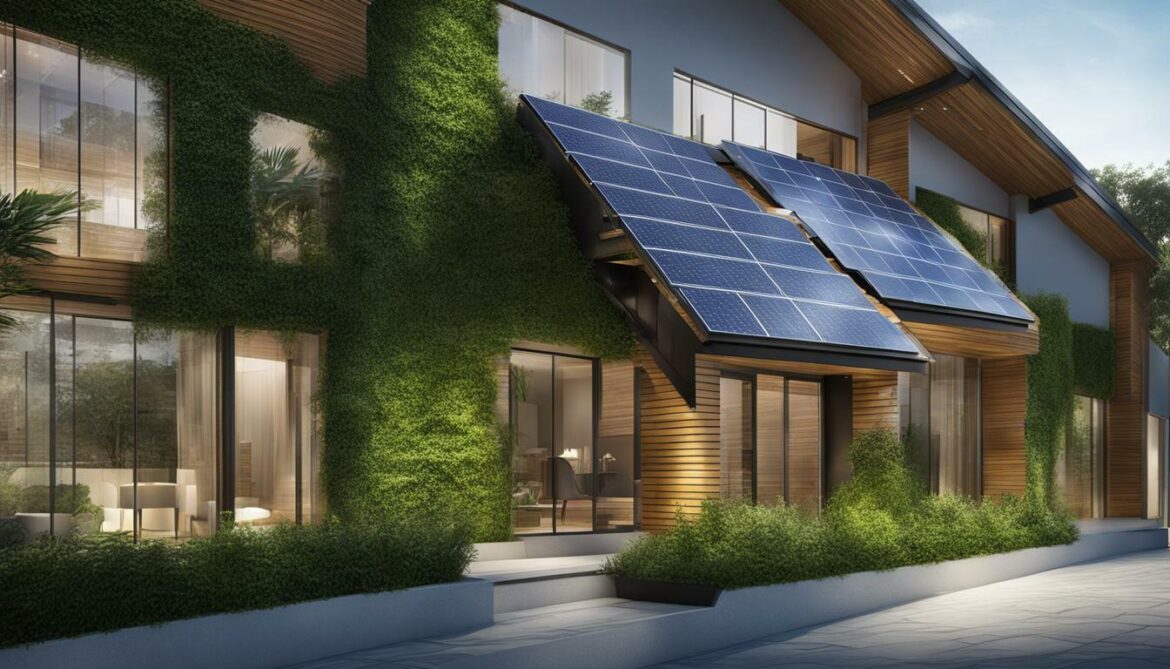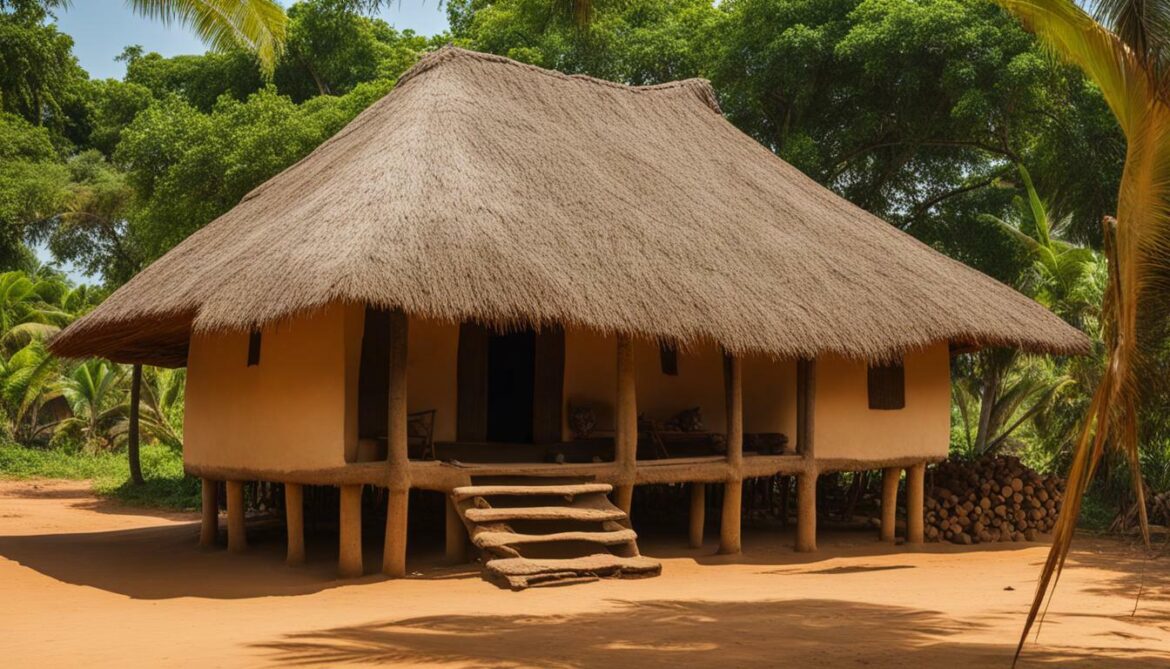Guinea-Bissau is paving the way for sustainable construction and eco-friendly architecture with its top green buildings. The country faces challenges in building structures that are both sustainable and energy-efficient, given its climatic conditions and urban problems. However, there is a growing interest in adopting sustainable construction practices and green building design in Guinea-Bissau.
Strategies such as bioclimatic or passive design, which prioritize heat protection and dissipation, ventilation, and the use of local resources like earth, are being explored. Despite the lack of urban identity and issues like unregulated construction projects, degradation of buildings, and housing deficit, Guinea-Bissau is gradually embracing sustainable practices.
Guinea-Bissau boasts a range of building typologies, including vernacular architecture, colonial architecture, contemporary trends, cooperative housing, and high-rise buildings. These structures make use of materials like rammed earth, adobe, concrete blocks, clay tiles, and zinc, showcasing the country’s diverse architectural styles.
In terms of renewable energy, Guinea-Bissau has significant solar potential. The country is investing in solar projects to address energy poverty and diversify its economy. The goal is to increase access to electricity and bolster its renewable energy capacity.
Furthermore, Africa as a whole has many sustainable building structures worth mentioning. Agostinho Neto University in Angola, sandbag houses in South Africa, Ecomo Homes in South Africa, the Eastgate Centre in Zimbabwe, the ‘Inno-Native’ House in Ghana, El Mandara Eco-Resort in Egypt, Gando Primary School in Burkina Faso, the Makoko Floating School in Nigeria, and Vissershok School in South Africa are just a few examples. These structures prioritize natural ventilation, natural light, recycling and use of local materials, and innovative designs to promote sustainability in the built environment.
- Guinea-Bissau is embracing sustainable construction and eco-friendly architecture.
- Strategies like bioclimatic design and the use of local resources are being explored.
- The country showcases diverse architectural styles, from vernacular to colonial and contemporary designs.
- Investment in solar projects aims to address energy poverty and increase renewable energy capacity in Guinea-Bissau.
- Africa has several inspiring sustainable building structures that prioritize natural elements and innovative designs.
Building Design Strategies in Guinea-Bissau
Through the use of renewable materials, green building practices, and innovative technologies, Guinea-Bissau is embracing energy-efficient structures and promoting environmental sustainability. The country faces unique challenges due to its climatic conditions and urban problems, but there is a growing interest in sustainable construction and architecture.
One of the key strategies being explored in Guinea-Bissau is bioclimatic or passive design, which focuses on heat protection and dissipation, ventilation, and the use of local resources. This approach takes into account the country’s hot and humid climate, aiming to create buildings that are naturally comfortable and energy-efficient.
Building typologies in Guinea-Bissau vary, ranging from traditional vernacular architecture to colonial buildings and contemporary trends. These structures utilize a diverse range of materials, including rammed earth, adobe, concrete blocks, clay tiles, and zinc. By incorporating local materials, Guinea-Bissau promotes sustainability and supports the local economy.
In terms of renewable energy, Guinea-Bissau has significant solar potential. The country is investing in solar projects to address energy poverty and diversify its economy. The goal is to increase access to electricity and expand the country’s renewable energy capacity. This investment in clean energy will contribute to a more sustainable built environment in Guinea-Bissau.
| Structure |
Location |
| Agostinho Neto University |
Angola |
| Sandbag Houses |
South Africa |
| Ecomo Homes |
South Africa |
| Eastgate Centre |
Zimbabwe |
| ‘Inno-Native’ House |
Ghana |
| El Mandara Eco-Resort |
Egypt |
| Gando Primary School |
Burkina Faso |
| Makoko Floating School |
Nigeria |
| Vissershok School |
South Africa |
These notable sustainable building structures in Africa incorporate features such as natural ventilation, natural light, recycling and use of local materials, and innovative designs. They serve as inspiring examples of how sustainable practices can be integrated into the built environment, promoting environmental sustainability and enhancing quality of life.

Guinea-Bissau boasts a range of building typologies, from traditional vernacular architecture to modern high-rise buildings, showcasing the country’s architectural diversity. These structures reflect different historical periods and cultural influences, contributing to the rich tapestry of Guinea-Bissau’s built environment.
One prominent architectural style in Guinea-Bissau is vernacular architecture, which encompasses traditional building techniques and materials that have been passed down through generations. This includes the use of locally-sourced materials such as rammed earth, adobe, and clay tiles. Vernacular buildings are designed to withstand the region’s climatic conditions, with thick walls for thermal insulation and small windows for heat protection. These sustainable practices have stood the test of time and continue to be embraced by local communities.
Colonial architecture also holds a significant presence in Guinea-Bissau, reflecting the country’s colonial past. This architectural style combines European influences with local elements, resulting in a unique fusion of design. Colonial buildings often feature grand facades, ornate balconies, and intricate detailing, showcasing the architectural heritage of the country.
In recent years, contemporary architectural trends have emerged, blending modern design principles with local aesthetics. These structures incorporate innovative materials, such as concrete blocks and zinc, to create visually striking and functional spaces. Additionally, Guinea-Bissau has seen the rise of cooperative housing projects, which promote community engagement and sustainable living through shared resources and collaborative design.
Alongside these typologies, high-rise buildings are also becoming more prevalent in urban areas of Guinea-Bissau. These vertical structures offer solutions to the country’s housing deficit and urban overcrowding. However, it is essential to balance the development of high-rise buildings with sustainability considerations, such as energy efficiency and resource conservation.
Overall, the diverse range of building typologies in Guinea-Bissau reflects the country’s architectural evolution and cultural heritage. From traditional vernacular structures to modern high-rises, each typology contributes to the unique identity and sustainable development of Guinea-Bissau’s built environment.

Renewable Energy in Guinea-Bissau
Guinea-Bissau is harnessing its abundant solar potential and investing in solar projects to tackle energy poverty and boost its renewable energy capacity. Located in West Africa, Guinea-Bissau benefits from a high level of solar irradiation, making it an ideal candidate for solar energy production. With its strategic focus on renewable energy, Guinea-Bissau aims to improve electricity access and reduce dependency on fossil fuels.
Investing in solar projects is a key priority for Guinea-Bissau, as it seeks to address energy poverty and promote sustainable development. The country recognizes the importance of diversifying its energy sources to ensure a more reliable and environmentally friendly energy supply. By harnessing the power of the sun, Guinea-Bissau can tap into its vast solar potential and provide clean and affordable electricity to its population.
The government of Guinea-Bissau is actively encouraging the adoption of solar energy through various initiatives and policies. These include the promotion of solar panels for households, businesses, and public facilities, as well as the establishment of solar power plants. By integrating solar energy into its energy mix, Guinea-Bissau can reduce its reliance on expensive and polluting fossil fuels, while also creating new job opportunities and stimulating economic growth.

Guinea-Bissau’s solar potential
As Guinea-Bissau continues to invest in renewable energy, the country is paving the way for a more sustainable future. By harnessing its solar potential, Guinea-Bissau can not only provide clean and reliable electricity but also reduce its carbon footprint and contribute to global efforts in combating climate change.
| Benefits of Solar Energy in Guinea-Bissau |
Challenges in Harnessing Solar Energy |
- Reduces dependency on fossil fuels
- Creates new job opportunities
- Improves electricity access
- Reduces carbon emissions
|
- Limited infrastructure
- High upfront costs
- Technical and maintenance skills
- Intermittency of solar power
|
Conclusion
Guinea-Bissau’s commitment to harnessing its solar potential and investing in solar projects is a significant step towards achieving sustainable development and addressing energy poverty. By embracing renewable energy, Guinea-Bissau can not only improve electricity access but also contribute to the global transition towards a cleaner and more sustainable future.
“Investing in solar energy is a win-win for Guinea-Bissau. It allows us to reduce our reliance on fossil fuels, create new job opportunities, and provide clean and affordable electricity to our population.”
– Minister of Energy and Natural Resources, Guinea-Bissau
Sustainable Building Structures in Africa
Across Africa, sustainable building structures are taking center stage, showcasing features such as natural ventilation, natural light, recycling, use of local materials, and innovative designs. These structures not only promote environmental sustainability but also respond to the unique challenges and needs of the continent. From universities and schools to residential and commercial buildings, Africa is embracing sustainable architecture to create a greener, more resilient future.
One remarkable example is the Agostinho Neto University in Angola. This renowned institution incorporates sustainable principles, such as natural ventilation and lighting, to reduce energy consumption and create a comfortable learning environment. Its innovative design integrates traditional building techniques with modern technology, allowing students to benefit from the best of both worlds.
Another inspiring project is the sandbag houses in South Africa. These affordable and eco-friendly structures utilize sand-filled bags as building materials, providing insulation and strength. By using locally available resources, these homes contribute to the local economy and reduce the environmental impact associated with long-distance transportation of building materials.
“Our goal is to create buildings that blend harmoniously with their surroundings, respecting the environment and enhancing the quality of life for their occupants.”
One of the notable sustainable building structures in South Africa is the Ecomo Homes. These futuristic, off-grid houses are designed to be energy-efficient and environmentally friendly. They feature rainwater harvesting systems, solar panels, and advanced insulation, reducing reliance on external resources and minimizing their carbon footprint.
It is worth mentioning the Eastgate Centre in Zimbabwe, a commercial building that was inspired by the natural cooling systems seen in termite mounds. This iconic structure utilizes passive cooling techniques, such as natural ventilation and thermal mass, to maintain comfortable indoor temperatures without excessive energy consumption. This innovative design has become a symbol of sustainable architecture in Africa.
For a comprehensive overview of sustainable building structures in Africa, refer to the table below:
| Building |
Location |
Features |
| Agostinho Neto University |
Angola |
Natural ventilation and lighting, blend of traditional and modern techniques |
| Sandbag Houses |
South Africa |
Utilization of sustainable and locally sourced building materials |
| Ecomo Homes |
South Africa |
Off-grid design, advanced insulation, renewable energy systems |
| Eastgate Centre |
Zimbabwe |
Passive cooling techniques inspired by termite mounds |
These sustainable building structures in Africa demonstrate the continent’s commitment to environmental responsibility and innovative design. By incorporating natural ventilation, natural light, recycling, and the use of local materials, these structures serve as inspirational models for the construction industry worldwide. As Africa continues to embrace sustainable building practices, it paves the way towards a greener future.
Conclusion
The top green buildings in Guinea-Bissau exemplify the country’s commitment to sustainable construction, eco-friendly architecture, and innovative green building design. Despite facing challenges in building energy-efficient structures due to climatic conditions and urban problems, Guinea-Bissau is witnessing a growing interest in sustainable construction and architecture.
Strategies such as bioclimatic or passive design, which focus on heat protection and dissipation, ventilation, and the use of local resources like earth, are being explored to address these challenges. The country has various building typologies, including vernacular architecture, colonial architecture, contemporary trends, cooperative housing, and high-rise buildings, which showcase the diverse architectural styles and materials used in Guinea-Bissau’s structures.
Furthermore, Guinea-Bissau recognizes the importance of renewable energy and has significant solar potential. The country is investing in solar projects to combat energy poverty and diversify its economy. With the goal of improving electricity access and increasing renewable energy capacity, Guinea-Bissau aims to create a sustainable and resilient energy sector.
In addition to Guinea-Bissau, other African countries are also implementing sustainable building structures. Notable examples include Agostinho Neto University in Angola, sandbag houses in South Africa, Ecomo Homes in South Africa, the Eastgate Centre in Zimbabwe, the ‘Inno-Native’ House in Ghana, El Mandara Eco-Resort in Egypt, Gando Primary School in Burkina Faso, the Makoko Floating School in Nigeria, and Vissershok School in South Africa. These structures incorporate features like natural ventilation, natural light, recycling and use of local materials, and innovative designs, promoting sustainability in the built environment across Africa.
FAQ
What are the challenges faced by Guinea-Bissau in building sustainable and energy-efficient structures?
Guinea-Bissau faces challenges such as its climatic conditions, lack of urban identity, unregulated construction projects, degradation of buildings, and housing deficit.
What building design strategies are being explored in Guinea-Bissau?
Guinea-Bissau is exploring strategies such as bioclimatic or passive design, which focus on heat protection and dissipation, ventilation, and the use of local resources like earth.
What are the different building typologies in Guinea-Bissau?
Guinea-Bissau has various building typologies, including vernacular architecture, colonial architecture, contemporary trends, cooperative housing, and high-rise buildings.
What materials are used in building structures in Guinea-Bissau?
Building structures in Guinea-Bissau utilize materials such as rammed earth, adobe, concrete blocks, clay tiles, and zinc.
What is the renewable energy potential in Guinea-Bissau?
Guinea-Bissau has significant solar potential and is investing in solar projects to address energy poverty and increase renewable energy capacity.
What are some sustainable building structures in Africa?
Examples of sustainable building structures in Africa include Agostinho Neto University in Angola, sandbag houses in South Africa, Ecomo Homes in South Africa, and more.
Source Links





















Post comments (0)